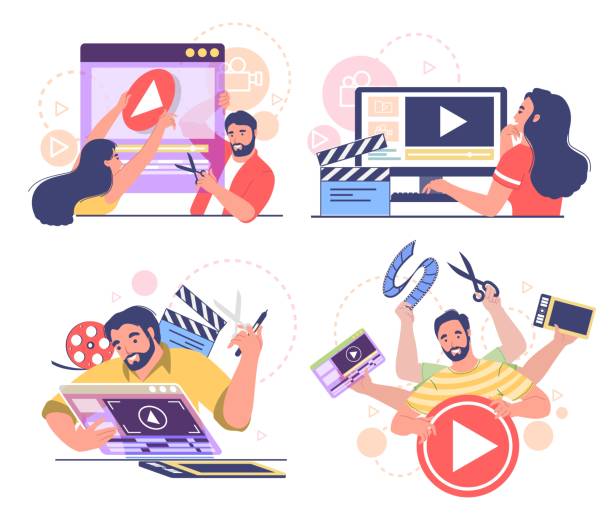In the vast landscape of animation, 2D cartoon animation emerges as a timeless art form, weaving stories and characters through a two-dimensional canvas. Let’s delve into the essence of 2D animation, uncovering its history, advantages, creation process, and future trends.
Understanding 2D Animation
At its core, 2D animation involves crafting movement within a two-dimensional space. This art form’s roots extend back to the early days of hand-drawn animation, evolving into today’s digital realm.
Understanding 2D Animation
At its essence, 2D animation encapsulates the art of creating movement within a two-dimensional space. The process involves illustrating scenes on a flat surface, typically by hand or digitally, crafting a sequence of images that, when played in rapid succession, simulate motion.
Evolution from Hand-Drawn to Digital
The origins of 2D animation trace back to traditional hand-drawn techniques. Early animators meticulously drew each frame by hand, showcasing skill and artistry. These animations, often seen in classic cartoons, laid the foundation for the art form we recognize today.
With the advent of digital technology, 2D animation underwent a significant transformation. Artists transitioned from physical drawings to digital tools, introducing efficiency and flexibility to the creative process. Software and specialized tools streamlined production, enabling artists to explore new horizons of creativity.
Principles of 2D Animation
The heart of 2D animation lies in fundamental principles that govern motion and storytelling:
Squash and Stretch
- This principle adds elasticity to characters and objects, giving them a sense of weight and flexibility.
Timing and Spacing
- The timing between frames and the spacing of movements determine the pace and fluidity of animation.
Anticipation and Follow-Through
- Anticipation prepares the audience for an action, while follow-through adds realism by showcasing the aftermath of the action.
Arcs and Path of Action
- Animators use arcs to create natural and smooth movements, mimicking real-world physics.
Appeal and Exaggeration
- Adding appeal to characters and scenes makes them more engaging, while controlled exaggeration emphasizes emotions or actions.
Traditional vs. Digital Techniques
Traditional 2D animation involves drawing each frame by hand, a meticulous and time-consuming process that demands precision and skill. This method still holds its allure for its authenticity and the human touch it imparts to the animations.
On the other hand, digital 2D animation utilizes software that simplifies the drawing process, allowing for quicker iterations and modifications. Artists can use tools like layers, keyframes, and timelines to streamline the animation process and achieve more complex effects efficiently.
Role in Modern Entertainment
Despite the emergence of 3D animation, 2D animation continues to hold a significant place in the entertainment industry. Its nostalgic appeal and unique aesthetic charm find resonance in diverse audiences. From television series and short films to advertisements and online content, 2D animation continues to captivate viewers worldwide.
The Strengths of 2D Animation
Versatility and Flexibility
The flexibility of 2D animation empowers creators to manipulate characters and backgrounds fluidly, fostering creativity and experimentation. This adaptability streamlines production, making it a versatile choice.
Cost-Effectiveness
Compared to 3D animation, 2D cartoon animation often proves more cost-effective. Its simplicity in tools and techniques reduces production expenses, attracting creators and studios, especially for smaller-scale projects.
Nostalgia and Charismatic Appeal
2D animation possesses a timeless charm, appealing to audiences across generations. Its nostalgic appeal and artistic simplicity forge emotional connections, contributing to its enduring popularity.
Tools and Software for 2D Animation
For beginners, accessible software like Toon Boom Harmony and Adobe Animate provide user-friendly interfaces. Meanwhile, professionals rely on advanced tools like TVPaint and Clip Studio Paint for intricate detailing and sophisticated techniques.
Crafting a 2D Cartoon Animation
Pre-production Phase
The groundwork begins with conceptualizing ideas, developing characters, crafting storylines, and creating storyboards, laying a robust foundation before animation begins.
Animation Process
The production phase brings sketches and storyboards to life, with artists meticulously crafting each frame to convey emotions and actions through timing, movement, and expressions.
Final Touches
Post-production involves adding sound effects, music, and fine-tuning to create a polished final product.
Tips for Success
Storytelling and Character Development
Compelling narratives and well-developed characters are pivotal for engaging 2D animation, captivating audiences and leaving a lasting impact.
Timing and Movement
Mastering the timing of movements is crucial, enhancing the lifelike essence and captivating nature of the animation.
Diverse Applications of 2D Animation
From entertainment to marketing and education, 2D animation finds extensive use in various industries, contributing creativity and engagement.
The Future Landscape
Innovations and Technological Advancements
Continual advancements in software, tools, and techniques expand the possibilities, pushing the boundaries of creative expression.
Integration with Emerging Technologies
The future of 2D animation involves integration with AR and VR, offering immersive experiences that blend traditional animation with cutting-edge technology.
Wrapping Up
In conclusion, 2D cartoon animation remains a potent and versatile form of artistic expression. Its enduring charm, cost-effectiveness, and adaptability continue to make it a preferred choice for storytellers and artists alike.
